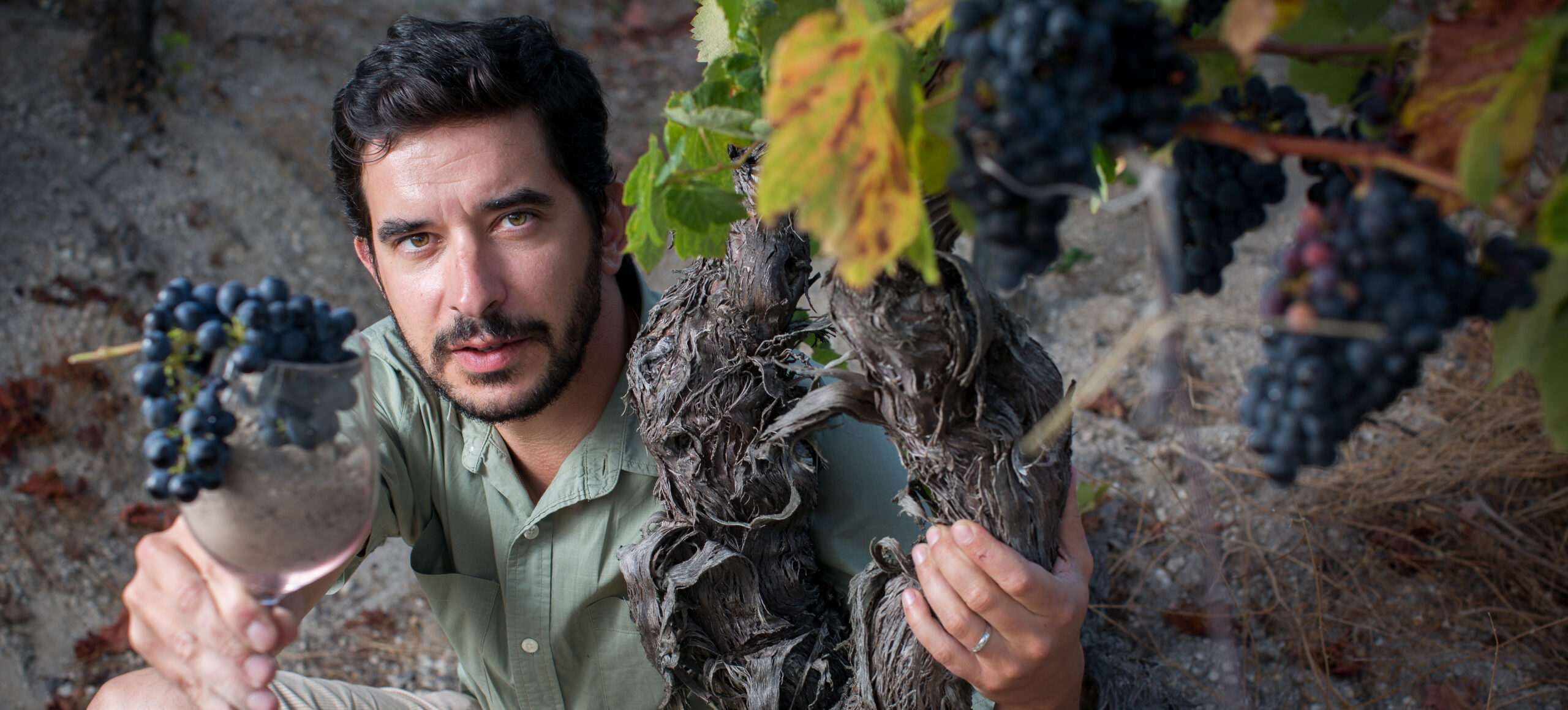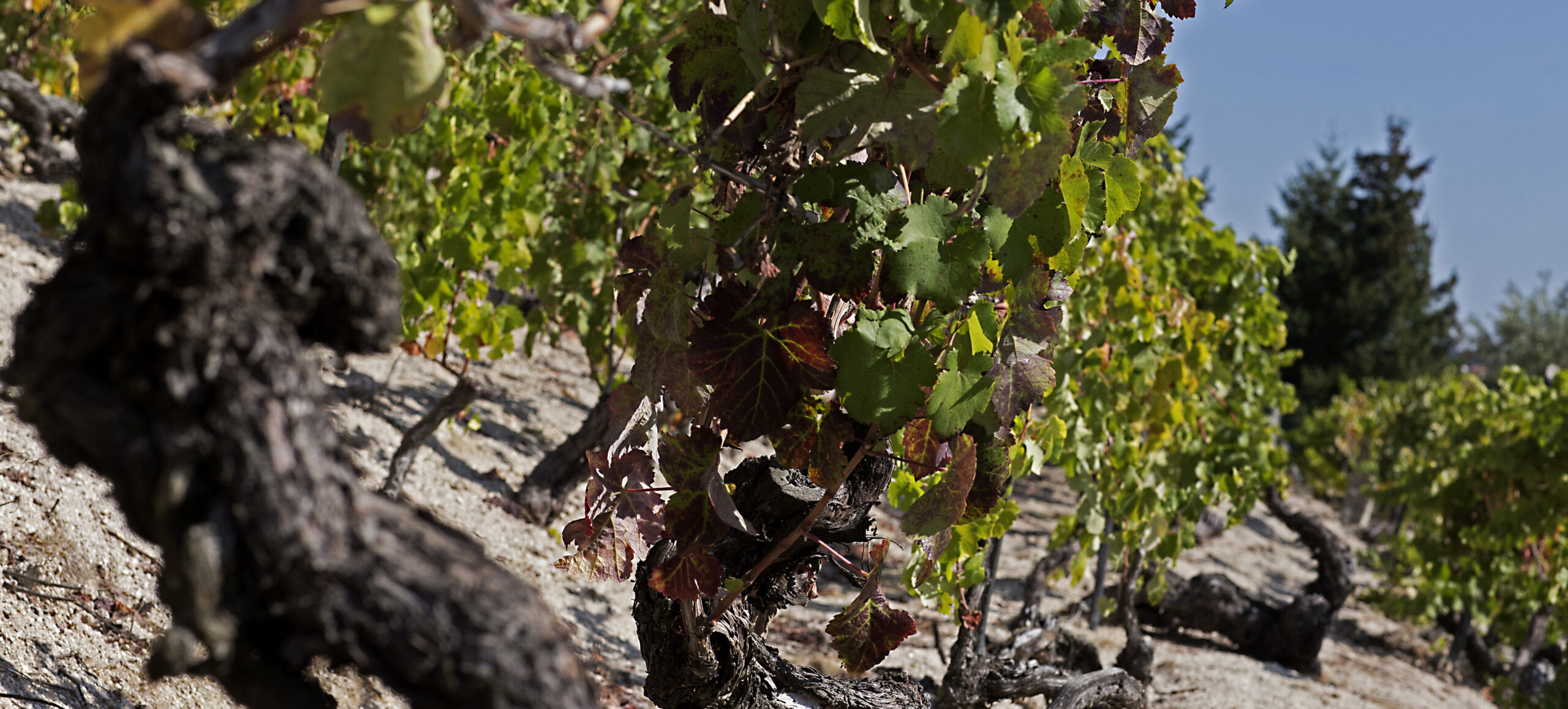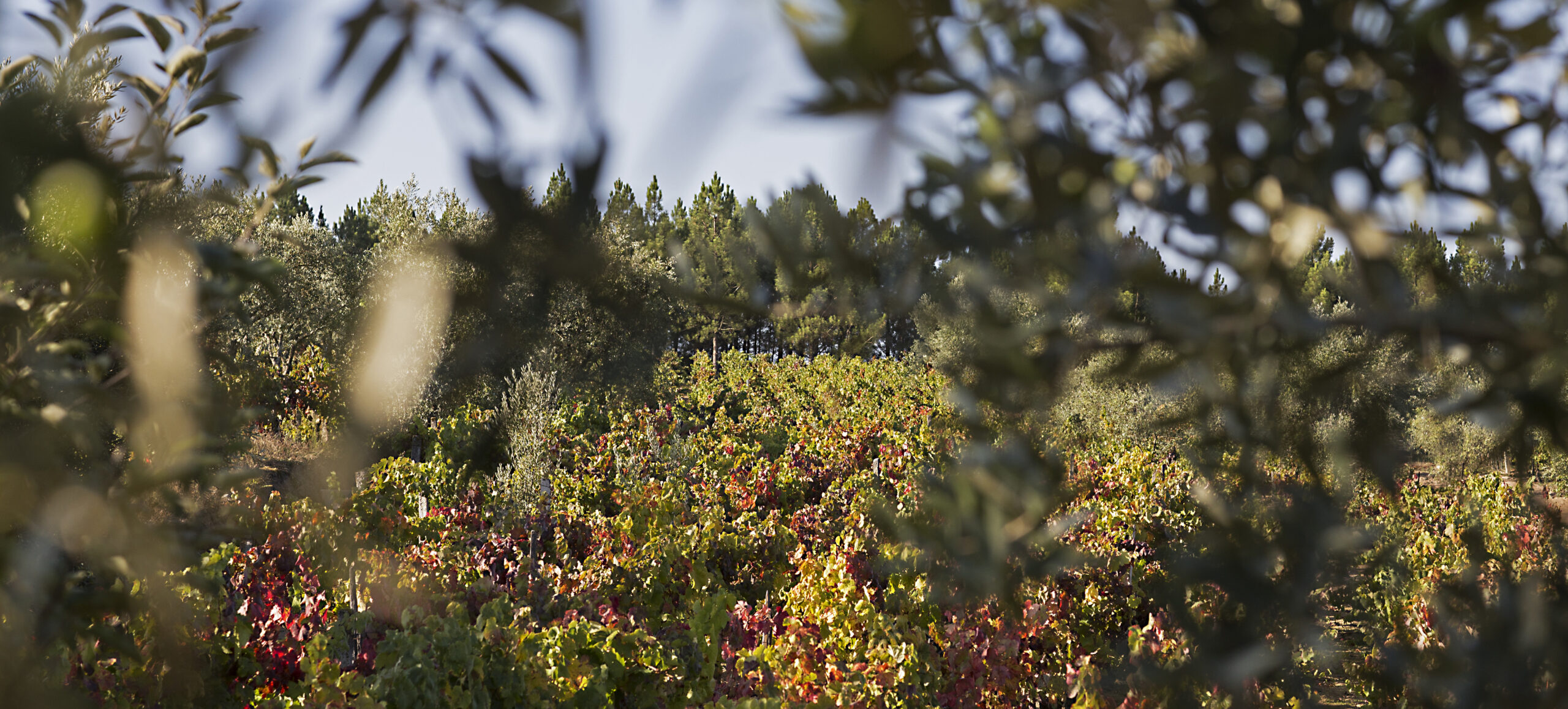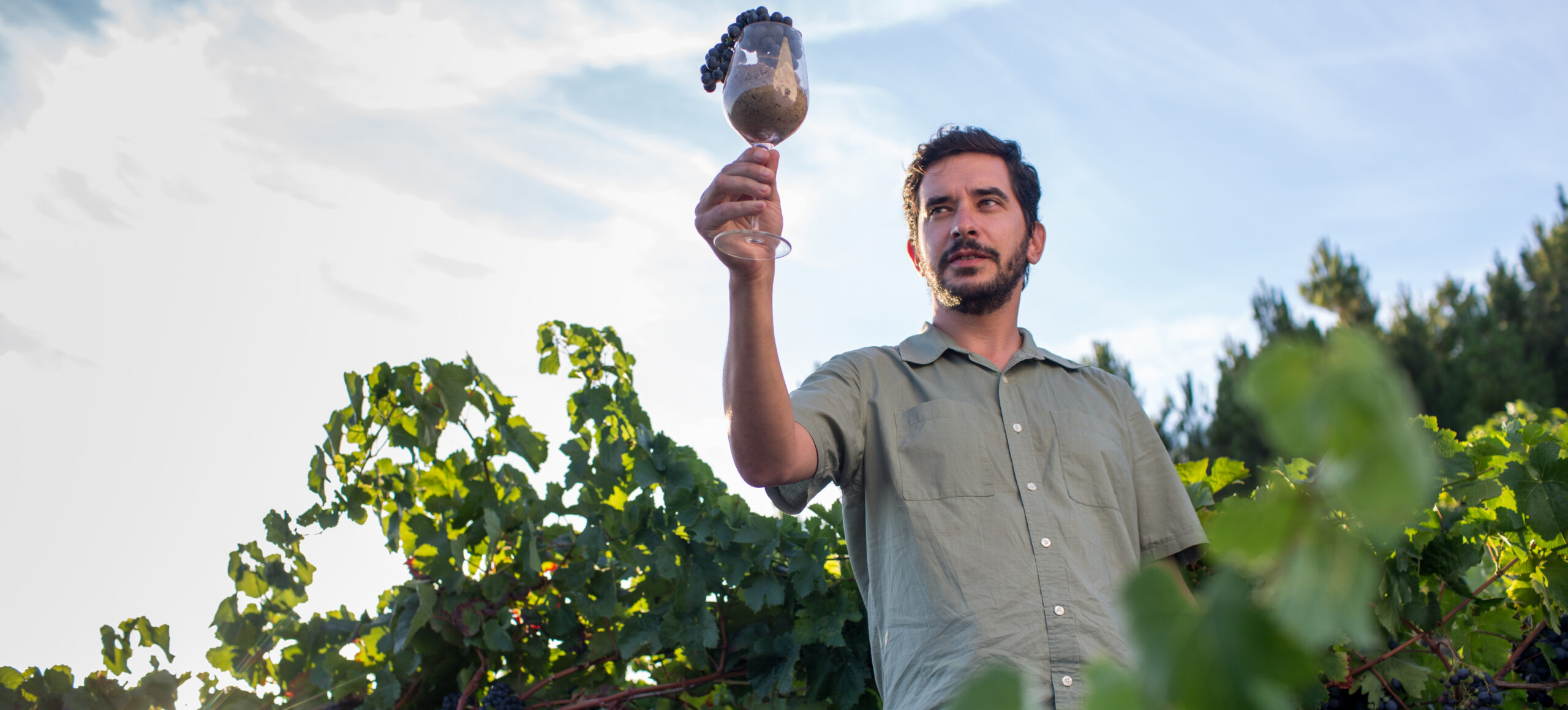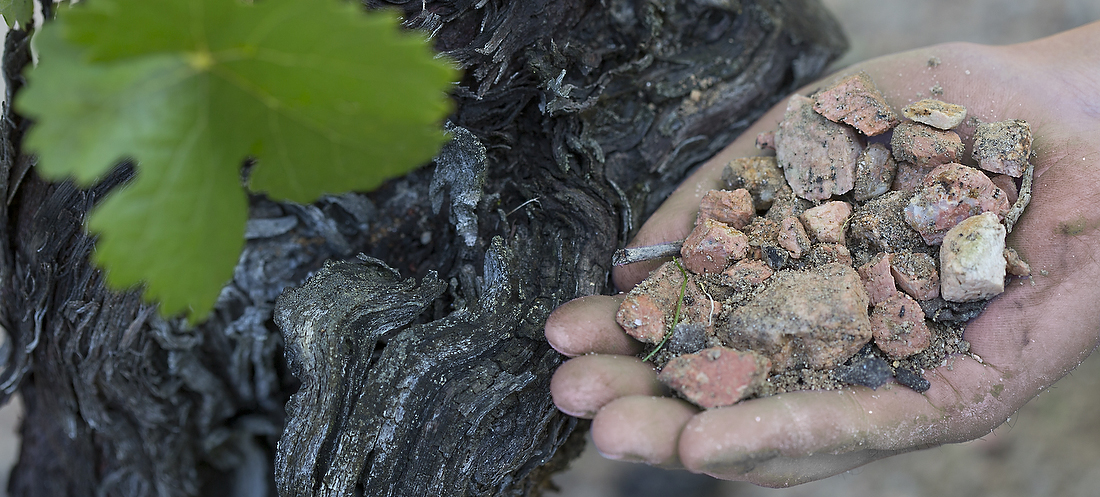The Dao region of Portugal was once a star wine area in Europe in the 19th century. Like Spain, Portugal’s wine history fell on tough times through the Salazar dictatorship era when the production of serious wine was cut way back. A few old, traditional-styled producers in the Dao continued to cultivate grapes and make wine into the 1970s and many of those wines are still going strong. Today, the Dao region is in a period of refocus and reinvigoration, and one of the most influential characters of this rebirth is Antonio Madeira.
Antonio was born in Paris in 1978. His father fled Salazar in 1970 from their family home in the Dao. Antonio grew up in France and, after Salazar’s brutal regime had long passed, he returned regularly to their home in the Dao. He studied Engineering and began working in France. On one of his summers in the Dao, he fell in love with the woman who would become his wife. She moved with him to Paris and they began a family. In Paris, Antonio was slowly getting fascinated by the top wines of France and the burgeoning Natural Wine movement. He began to think that his home in the Dao could be a great candidate for making top Natural Wines with tremendous elegance and class due to the granitic soils, high elevations, and old vines of the region. In 2010, Antonio began to make wine in the Serra da Estrela sub-region of the Dao and in particular near the village of Santa Marinha. Initially, the family continued to live in Paris and only came to the Dao for harvest. Antonio’s father-in-law helped him manage the vineyards and winery during the other times of the year. Finally, in 2017, Antonio and his family decided to move to the Dao full-time to live and make wine.
Over time, Antonio has assembled an estate of 8 Hectares with 20 separate plots of vines in 6 different villages within the Serra da Estrela sub-region of the Dao. Of these 8 HA, he owns 6 Ha outright, but also rents a total of 2 hectares where he oversees all the farming. In total, his parcels contain over 45 different indigenous varieties! He works all his parcels biodynamically and plows his vineyards with horses. This hands-on work is labor-intensive, and he employs 6 people full-time to help him work the vines.
In terms of his influences in both the vineyards and cellar, Antonio claims his most significant are Jules Chauvet and Henri Jayer on the red wine side and Anne-Claude Leflaive and Richard Leroy on the white wine side. So, all in all, wines that are not only Natural and low-input but also wines that have substance and purity. Following suit, in the cellar, all vinifications use natural yeasts and all have minimal sulfur additions at bottling,
In terms of the product range, Antonio produces an entry-level Branco and Tinto from purchased fruit where the growers are natural leaning and do not use herbicides. Beyond that, the core of Antonio’s own estate vineyards are the “Vinhas Velhas” wines, Branco and Tinto. The white sees a total of 2 years of aging with the initial natural fermentation done part in old 500L oak and part stainless steel and then combined for a 2nd year of aging in steel. In 2022, Antonio began to do a small amount of skin maceration under CO2 for 2 weeks to gain more aromatics in the wine. The VV Tinto is all naturally fermented in used French oak and then aged for 18 months. Antonio then selects from the casks for the final blend. To use a Burgundy analogy, the entry wines Antonio views as his regional wines then the VV’s as his village wines, and then he has his cru wines.
The first of the crus is his so-called “premier cru”, A Palheira. This is a blend of his best vineyards with vines ranging in age from 60-100 years old. While there are over 20 varieties in this wine the main one tends to be Baga. The next level begins the “grand crus” and starts with Os Granitos which is a single parcel of over 100 years of vine age and more than 20 varieties but Jaen is the dominant one. Then we have Vinha da Serra which is also over 100 years old but located in the mountains at 600+ meters. This parcel too has more than 20 varieties but Tinta Amarela is the main one. Then there is A Centenaria which is a parcel that has more than 130 years of vine age and more than 40 varieties planted in it with the main one being Jaen. The Cru wines for sure have a Burgundian sensibility, created by high elevation and granitic soils giving the wines freshness and elegance akin to fine Burgundy. Unfortunately, they are all produced in minuscule quantities.
All the wines could qualify for being truly Natural in terms of how they are made (viticulture/winemaking), but Antonio also makes a Branco and Tinto called A Liberdade which have zero added sulfites and come from a selection of his biodynamically farmed parcels. It is a nod to those uber-purists who want true “zero-zero” wines.
And last but not least is his Palhete called Ainda. Palhete is a traditional wine of Portugal that was made in almost all the regions. Palhete is a true field blend of white and red grapes fermented together naturally and intended to be a simple and somewhat rustic wine. Antonio’s version Ainda has hints of rusticity but is crafted of such quality fruit that it shows the potential of this traditional winemaking technique but executed in an enlightened version.
Overall, it is important to remember, that the Dao is still a vast appellation with a lot of diversity and a sea of cheap and industrial wines that dominate the marketplace. Yet this is a different world compared to tiny producers like Antonio Madeira who are still few in the Dao and focus solely on top-quality wines, usually from the best sub-zone of Serra da Estrela. We are excited to show the potential and the greatness of this amazing terroir and this talented and groundbreaking grower.
